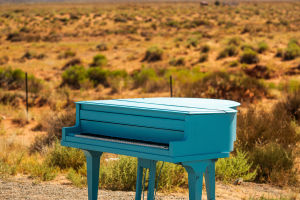Flower arrangement is an artistic technique that involves carefully selecting and placing plant branches, leaves, fruits, and flowers into various containers to create decorative installations.
This ancient form of art has evolved throughout history, developing unique cultural styles and aesthetic values across the globe. More than an aesthetic expression, flower arrangement symbolizes a dialogue and connection between humans and nature. It is deeply intertwined with the cultural contexts it has been practiced, carrying profound meaning and connotations.
The history of flower arrangement stretches back thousands of years. In ancient civilizations such as Egypt, Greece, and Rome, flower arrangement was essential in decorating buildings, worshiping gods, and performing sacrificial rituals.
The Egyptians, especially, revered the lotus, as it symbolized life, resurrection, and purity. Lotuses were commonly used in ceremonies and burials.
Meanwhile, the Greeks used olive branches and laurel wreaths to mark celebratory occasions, such as festivals and sporting events. These plants were symbolic of peace, victory, and glory.
In the East, flower arrangements are also a rich and long-standing tradition. The Chinese art of flower arrangement dates back to the Han Dynasty, Chinese intellectuals embraced flower arrangement as an elegant art form, seeing it as a way to cultivate their sensibilities.
This practice became intertwined with other traditional Chinese arts, such as calligraphy, painting, and tea ceremonies, creating a lifestyle that reflected the harmony between nature and the human spirit.
In Chinese flower arrangements, the selection of plants, the direction of branches, the overall shape, and the interplay of colors all reflected an appreciation for nature and the balance between humans and their environment.
In Japan, flower arrangement (known as "Ikebana") was heavily influenced by Chinese traditions but developed into a distinct practice. Ikebana is more than just a technique for arranging flowers; it is a meditative art form that reflects the beauty and essence of nature through the careful arrangement of floral elements.
Japanese flower arrangement emphasizes simplicity, serenity, and the use of natural lines and spaces. The Japanese often use branches, leaves, and fruits to represent the changing seasons and the rhythms of life.
Ikebana places great importance on negative space, creating a natural sense of balance within the work. Each petal, branch, and flower is positioned thoughtfully to convey harmony with the natural world.
Over time, flower arrangements evolved from having primarily ritualistic significance to becoming a widespread art form that permeates daily life. In modern times, flower arrangement has become a central element in home decor, celebrations, and social etiquette.
As people increasingly seek to beautify their environments and express their emotions through their surroundings, flower arrangements have emerged as a popular method of bringing nature indoors and cultivating a sense of peace and relaxation.
Beyond merely decorating spaces, flower arrangements can influence a person’s emotions and mental state. By introducing the beauty of the natural world into interior spaces, individuals can experience the changing seasons and the passage of time in a more intimate way.
Today, the art of flower arrangement is not only more diverse in technique, but it has also embraced a fusion of cultural elements and personal styles. With the advent of globalization, Eastern and Western flower arrangement styles have begun to influence each other.
Western styles of arrangement have evolved to embrace more freeform, asymmetric designs that emphasize bold, personal expression and the creative use of color. In contrast, Eastern arrangements, while still adhering to principles of simplicity and restraint, continue to prioritize artistic mood and the flow of nature.
Modern flower arrangements have become a versatile and innovative art form, with contemporary artists and designers experimenting with new materials, structures, and techniques. The boundaries of tradition have been expanded, leading to the creation of works that are creative, original, and deeply personal.
Flower arrangement, as both an art and practice, carries with it a rich historical and cultural legacy while simultaneously remaining relevant in modern life. Whether used in ceremonies, celebrations, or simply to beautify a home, flower arrangements reflect the deep connection between humans and nature.
Through the careful arrangement of natural elements, people can appreciate the beauty, vitality, and tranquility that nature offers. In an increasingly fast-paced world, flower arrangement provides a moment of peace, allowing people to reconnect with nature and themselves.


